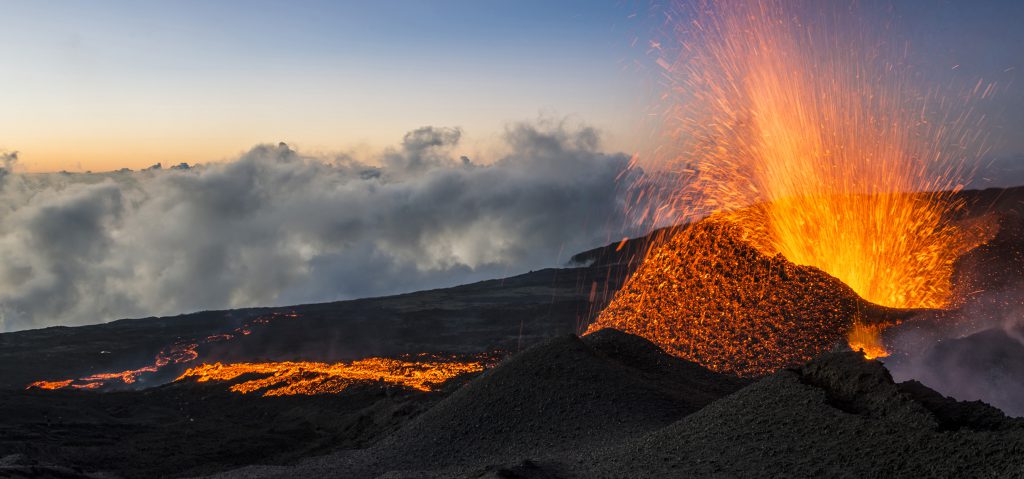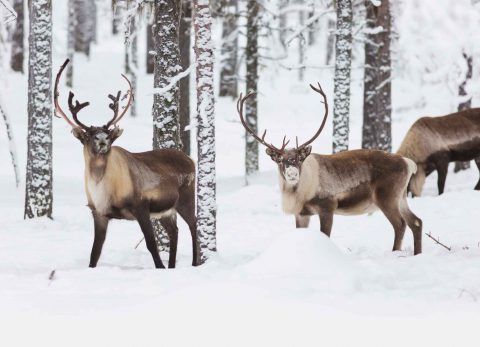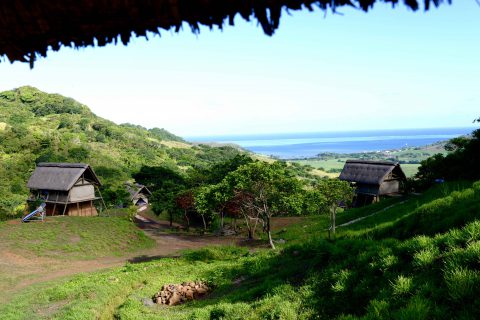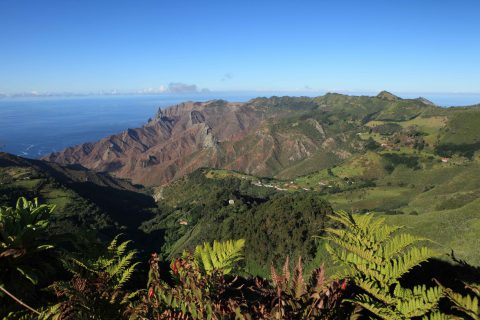Financial Mail Travel
Adventure Island
“Close your eyes,” said our guide Sully Chaffre, as we drove deeper into Reunion National Park. “Don’t open them until I say,” he insisted. It was a difficult instruction to obey. Since entering the park – which covers 40% or just over 100 000 hectares of Reunion Island – we had been wowed by the contrasts and biodiversity of this UNESCO World Heritage Site. Alpine-green landscapes scattered with cows and swept with low-lying clouds conjured from the pages of Heidi were on the one side of the road, while raptors soared over rugged, forested gorges on the other side.
“Open them!” he finally exclaimed as we rounded a corner to overlook another otherworldly, rocky landscape. “It looks like something out of a science fiction film set, doesn’t it?” Indeed, this tableau of land against the sky seemed surreal, like a scene from The Martian. It was desolate until, seemingly on cue, cars zigzagged down the slope and across the unearthly landscape to produce a fine waft of dust – like the first signs of an atmosphere. The cars silently, slowly made their way towards the fold in the horizon, across a strange terrain that has been moulded by lava flow over millions of years.
According to Philippe Kowalski, deputy director of the Volcanological Observatory of Piton de la Fournaise, Reunion owes its existence to tumultuous volcanic activity. “At first, there was nothing but the lava flow beneath the Earth’s crust. Numerous eruptions around the Reunion hotspot occurred and it began to grow, until eventually an island appeared.”
That all happened some 2 million years ago, just above the Tropic of Capricorn and around 800 kilometres east of Madagascar. Reunion is part of the Mascarene Archipelago which also includes the islands of Mauritius and Rodrigues, and is a French department. “Reunion only accounts for around 10% of the underwater volcano, though it grows bigger with each eruption,” Kowalski told me.
Found in the centre of Reunion, Piton des Neiges, which means “snow peak”, has been inactive for around 20 000 years, but Piton de la Fournaise, on the southeastern part of the island, is one of the world’s most active volcanoes. The closer we got to the latter’s eight-kilometre-wide caldera, the more evident it became why volcano tourism and related activities are the biggest draw for visitors to the island which – let’s face it – is a pretty obscure outpost of the EU. Thanks to the volcanic activity, though, it gets slightly shy of a million visits each year.
After a 20-minute walk down the steep basalt cliffs, I was standing in the embrace of the 530 000-year-old wonder surrounded by craters and spatter cones, and among potholed volcanic rocks and stones of different sizes. I watched hikers make for its 2 632-metre summit, aptly called “furnace peak”. Some of them would undoubtedly camp at its rim that night, while the volcano slumbered.
When it next reawakens, volcano vacationers – possibly the geological equivalent of thrill-seeking hurricane hunters – will fly in from around the world to witness its eruptions. For these niche travellers, Reunion is on the hot list because of its regular volcanic activity. Piton de la Fournaise has erupted over 180 times since her eruptions were first recorded in 1640. “We have recorded an average of three eruptions each year over the last decade, and the average eruption lasts three weeks,” explained Kowalski. Reunion’s national carrier, Air Austral, offers flight specials ahead of and during eruptions. Kowalski explained how this basaltic shield volcano produces spectacular lava fountains and large expanses of bubbling lava rather than explosive eruptions with clouds of ash. This is because the magma in the Earth’s crust is very liquid here, making it easy for the magma to reach the surface.
These geological pyrotechnics and bubbling cauldrons can be safely viewed from a close distance, overseen by park officials, and from above. Volcano tourism is part of an industry that is carefully monitored and regulated, of course – nobody’s permitted to blithely walk into an active volcano, and any explorations should obviously only be undertaken with recognised guides.
Having stared in awe from the ground, we then took to the sky for a 45-minute helicopter flight along the coast, over both volcano craters, across the verdant expanse of the protected national park with its matchbox communities, as well as the toothpick-like waterfalls that disappear into the tropical forest. Seeing the volcano from a bird’s-eye view allowed me to get a real sense of its most recent timeline – the darker the lava flow, the more recent the eruption.
Hardened adventurers can also explore the volcano from yet another perspective, by going deep into the Earth’s hot underbelly and navigating the network of lava tunnels, at times on their hands and knees. Fear not: helmets, headlamps, knee and elbow guards are provided for these insane-sounding tours.
Or you can take a running jump off the slopes of Saint-Paul, at Bellmène, to tandem paraglide on the thermals over forests, sugarcane fields, a botanical garden, and the coastline where lava flow has been solidified by the ocean water. The yachts, motorboats and kitesurfers were barely distinguishable until we floated closer to Earth before touching down on the beach, where island life was in full force – from water sports and sunbathing to swimming in some of the world’s most shark-infested waters, under the watchful gaze of lifeguards and only in designated areas with shark nets, of course.
Reunion Island can be any kind of island you want it to be. It is also unlike any other kind of island.





